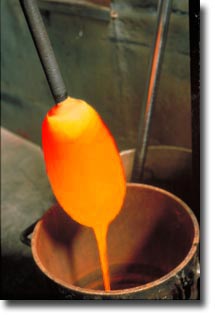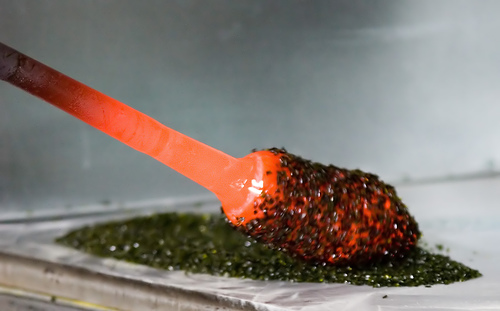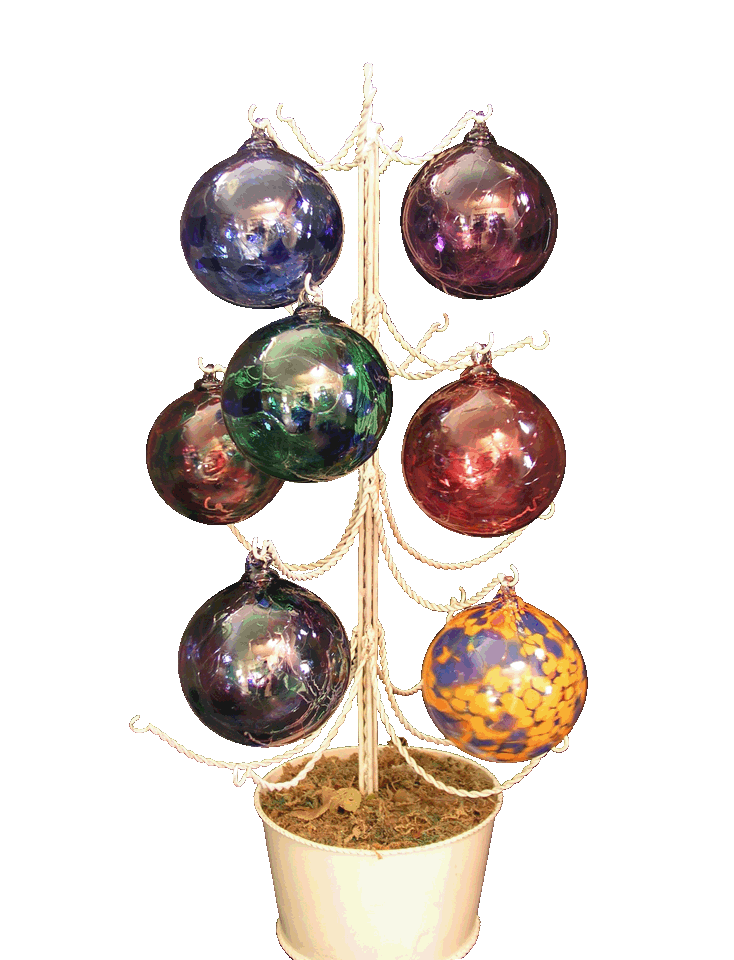|
The Art of Glass Blowing
|
|

|
Molten glass is made when
sand and other ingredients are melting in a furnace at over 2000° F. The
glassblower dips a blowpipe into the hot liquid glass to collect a gather,
or blob of glass, on the end of the pipe. |
|

|
A
piece begins when the glass blower reaches inside the furnace and into a
crucible that is filled with clear, melted glass and “gathers” a layer
of molten glass on the end of a steel blow pipe. |
|

|
The
gather of glass is rolled on a steel table called a marver to smooth it
into a rounded form. The glass is then heated in the glory hole – all
the while the artist is turning the blow pipe and keeping it in constant
motion. |
|

|
The
glass blower (gaffer) forms his or her work in an oven called a “Glory
Hole” that keeps pipes and punties hot. The gaffer has to constantly
reheat the piece in a glory hole to keep it at the right temperature while
shaping and forming the piece. Finished work is kept in an annealing
oven to slowly cool down.
|
|

|
Most
glassblowers start with clear glass and then add color. When the glass is
blown into a bubble and shaped, the colored glass becomes part of the
whole piece. Another way to add color is to dip or roll the clear or
colored glass into some frits of colored glass. |
|

|
The
glassblower then blows air through the pipe to create a bubble of glass.
The gaffer uses blocks and other tools to shape the hot glass into the
form he or she wants. |

 Home
Home